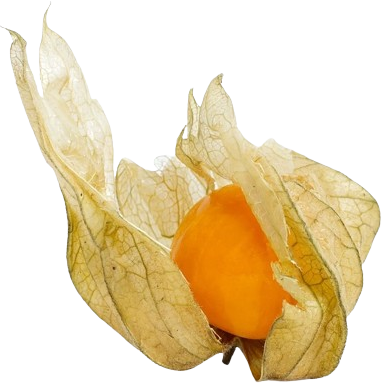 Products
ProductsDon't settle for the ordinary, discover the magic and live an unforgettable sensory experience
Each fruit is a work of art by nature. We carefully select the best for you
Products
 Physalis
Physalis- Bananito
- Yellow Pitaya
- Maracuya
- Granadilla
- Gulupa (passion fruit)
- Tree Tomato
- Kumquat
- Hass Avocado
- Mangosteen
- Tahiti Lime

Physalis
Physalis peruviana
A tropical explosion of flavor that dances on your tongue
Also known as aguaymanto, uvilla, or Cape gooseberry. It was introduced to England in the 18th century and to South Africa in the 19th century.
The fruit is an ovoid-shaped berry with a diameter between 0.6 and 0.3 inches and weighs 0.14 to 0.21 ounces. Its skin is smooth and shiny. The fruit is covered by a thin, inedible fibrous membrane or sheath (calyx) that can be yellow or green.
Nutritional information
| Elemento | Total | Unidad |
|---|---|---|
| Calories | 53 | Kcal |
| Proteins | 1.9 | g |
| Fats | 0.7 | g |
| Carbohydrates | 11.2 | g |
| Fiber | 4.9 | g |
| Vitamin C | 20 | mg |
MICRONIOLOGICAL SPACIFICATIONS
Mesophilic Aerobic Count: ≤ 3000 CFU/g. Yeast and Molds: ≤ 100 CFU/g. Total Coliforms: ≤ 200 CFU/g. Fecal Coliforms: Not detectable (N.D.).
PHYSICOCHEMICAL SPACIFICATIONS
Measurements at 20°C of Natural Juice. Total solids percentage (°Brix) 8.0 - 10.5. pH (20°C) 3.1 - 3.4. Brix / Acidity Ratio 3.5 - 10.0.
TYPE OF TREATMENT
Cape gooseberries undergo the following stages: Receiving, Storage, Selection, Basket Packing, Drying, Packaging, and Dispatch.
STOREGE CONDITIONS
Temperature: Between 8 - 10°C (46 - 50°F) Relative Humidity: Between 65 - 70%.
CONSUMPTION
This fruit is eaten raw like a grape, alone or with other fruits in salads or with melted chocolate as a dessert, and as a garnish for dishes. It can also be used to make jams, sauces, or fillings for delicious cakes, and for decoration.
USEFUL LIFE UNDER STORAGE CONDITIONS
27 days.